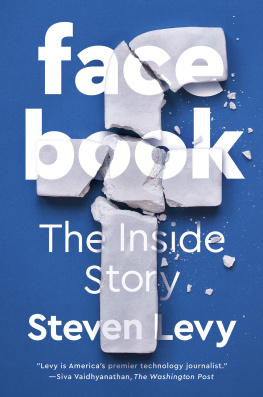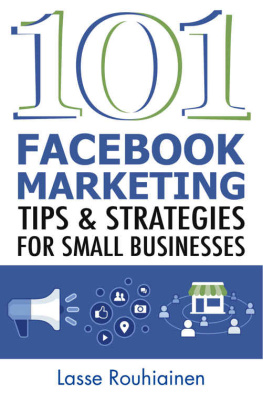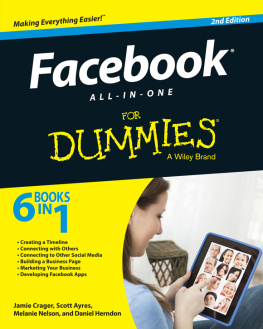I.
Instagram History
Facebook Steps Up
On April 5, 2012 Instagram was valued at 500 million dollars as part of a new round of funding with investors. Just a few days later, Mark Zuckerberg, CEO of Facebook, negotiated to buy it for $1 billion, $300 million cash and $700 million in Facebook shares. CNN called it one of the biggest deals in recent business tech history not too shabby for a business only 18 months old, and a great inspiration to small companies everywhere. However, Facebooks acquisition received mixed reviews and many raised eyebrows in the technology and business world.
As details emerge regarding the buyout, and as analysts scramble to make sense of the deal, there are many questions. How did Zuckerberg and Kevin Systrom of Instagram arrive at a figure of $1 billion? What implications does this deal have for Facebook when it goes public in an expected Initial Public Offering in May, 2012? Why does Facebook want Instagram so badly? What can businesses learn from this deal, and how the heck did a tiny company without any revenue become so desirable in just 18 months?
While Instagrams buyout by Facebook was viewed by many as a surprise acquisition , it illustrates the increasing importance of the image-based social-sharing platforms in todays technology business world. Facebook already had a photo-sharing mobile photo-sharing program, but it was slow to load and clumsy to use. For the past several years, a team had been working on developing a solution. As recently as last summer, rumours circulated about a Facebook iPhone photo-sharing application that would make it easier for users to upload, edit and share their photos. With changes in team members and little to show for their work, nothing more was heard of Facebooks progress until February 2012, when Business Insider magazine reported new product boss Dirk Stoop was working on a new solution to the problem.
Zuckerberg was reported in the New York Times piece With Instagram Deal Facebook Shows its Worth as saying We dont plan on doing many more of these, if any at all, but providing the best photo-sharing experience is one reason why so many people love Facebook and we knew it would be worth bringing these two companies together. It is safe to assume that Facebooks own product was not working out as hoped, leading Zuckerberg to buy the best photo-sharing experience instead of developing it.
In addition to examining details of the acquisition, there are broader issues to address. How can businesses use Instagram and Facebook to build their own brands? What does this deal say about Facebooks predictions for the mobility market and photo-sharing platforms? While Zuckerbergs official statement is that Instagram will continue operating as a separate platform from Facebook, and that people who have Instagram but arent on Facebook can continue using their favorite app, how will Instagram change now that it is owned by Facebook?
In this book, we will address these questions and review a quick history of Instagram. Well examine the events of Easter weekend that led to the Instagram buyout, and get a glimpse into the fast-moving world of high tech business and multi-billion dollar companies.
How the Deal Went Down
According to Facebook and Instagram employees as reported by CNN , The New York Times and the Wall Street Journal , Mark Zuckerberg called Kevin Systrom, co-founder of Instagram, to set up a meeting before the most recent round of financing for Instagram was finalized during which time the iPhone photo-sharing app was valued at just $500 million.
Sometime during the day on Thursday April 5, 2012, Facebook Chief Investment Officer Sheryl Sandberg learned of Zuckerbergs intention to pursue and acquire Instagram. Zuckerberg calls Kevin Systrom asking for a meeting, and they meet that evening at Zuckerbergs mansion in Palo Alto, California to begin discussions.
On Friday April 6, 2012, Systrom finalizes a multi-company investing deal for Instagram with venture-capitalist firms Sequoia Capital, Thrive Capital and Greylock Capital, a deal that would inject 50 million dollars into Instagram and valuing the company at 500 million dollars. Later that day Systrom and Zuckerberg meet at Zuckerbergs home again to resume discussions.
Negotiations continued through the Easter weekend, with Zuckerberg and Systrom working on the deal in the privacy of Zuckerbergs home for hours at a time, finally coming to an agreed purchase price of $1 billion, comprised of thirty percent cash and seventy percent Facebook stock and just half of the $2 billion that Systrom originally wanted for his fledgling company.
On Sunday April 8, 2012, Zuckerberg informs Facebooks Board of Directors that the purchase of Instagram will be completed later that day, and soon after the world learned of the surprise acquisition of Instagram.
Facebooks Impending Public Offering
To purchase Instagram with Facebook stock required Zuckerberg to acknowledge an estimated share price of approximately $30 per share for the still-privately held Facebook , though the details behind arriving at this number arent being shared. However, once Facebook does go public and starts trading on the open market, anything could happen, and the share price could easily be higher than the estimated $30. While Facebook shares have traded as high as $40 on the secondary market, Lise Buyer of the advisory firm Class V Group told the New York Times that its still unclear if theres a strong correlation between pricing on the secondary markets and the primary markets. This $700 million valuation of Facebook stock for the acquisition of Instagram pegs the total value of the social media giant at upward of $104 billion.
Selling a smaller company in return for a combination of cash and shares in the acquiring company can be a lucrative opportunity for start-ups that get in the way of tech business giants. As a recent New York Times story states, Amazons 2009 acquisition of Zappos for 10 million shares worth $807 million was a great deal for the Zappos folks. In three years the value of those shares more than doubled to over $1.9 billion. If Facebook enjoys the same kind of rapid increase in share price after it goes public next month, Instagram could be on the receiving end of an even sweeter deal than they already made.
Become a Hyperink reader. Get a special surprise .
Like the book? Support our author and leave a comment !
II.
Instagram: Photo Sharing & What Is So Special, Anyway?
What Is Instagram Anyway?
Instagram is a free social-networking and photo-sharing editing application for iPhones. As of early April 2012 it is also available for Android tablets. Users download it to their phone from the Apple iTunes store or to their Android from Google Play. Photos are taken and then enhanced with various special effects such as blurred backgrounds, borders, and brightening or darkening objects in the shot. These enhanced images including a caption and comments are then shared with other Instagram users and distributed via social media sites such as Facebook, Twitter, Flickr, and Tumblr.
How Does Instagram Work?
As of April, 2012, over 40 million iphone and Android owners use Instagram. One of the things that these users repeatedly remark on is how easy it is to use it. Download the app for free, spend a few minutes learning the basics and snapping a few photos, add some special effects with editing, then share them with other Instagram users and the social media world.
- Download: Users download the app via the spartan Instagram website . This is quite simple as these are the only two buttons presented on the Instagram homepage. Once the program is downloaded, users set up an account and are connected to Instagrams social network.
- The Basics: [Insert Image Here] Via Brent Ozar Instagrams main screen includes five buttons: Home, Popular, Camera, News and Profile. Home reveals a users feed of new images added by people they are following, while Popular provides a continuous stream of the Instagram networks most popular pics as voted by likes. Likes are easy to add by simply double-tapping the screen while the selected image is displayed. The Camera button starts the camera feature of the phone or Android, including the filters and other special effects. News provides updates on new followers and new images posted by people the user is following. The Profile button allows users to edit profiles, choose settings for social network sharing with given social media sites, review and edit the saved library of previously-snapped images, and find and add friends on the Instagram network.
Next page






